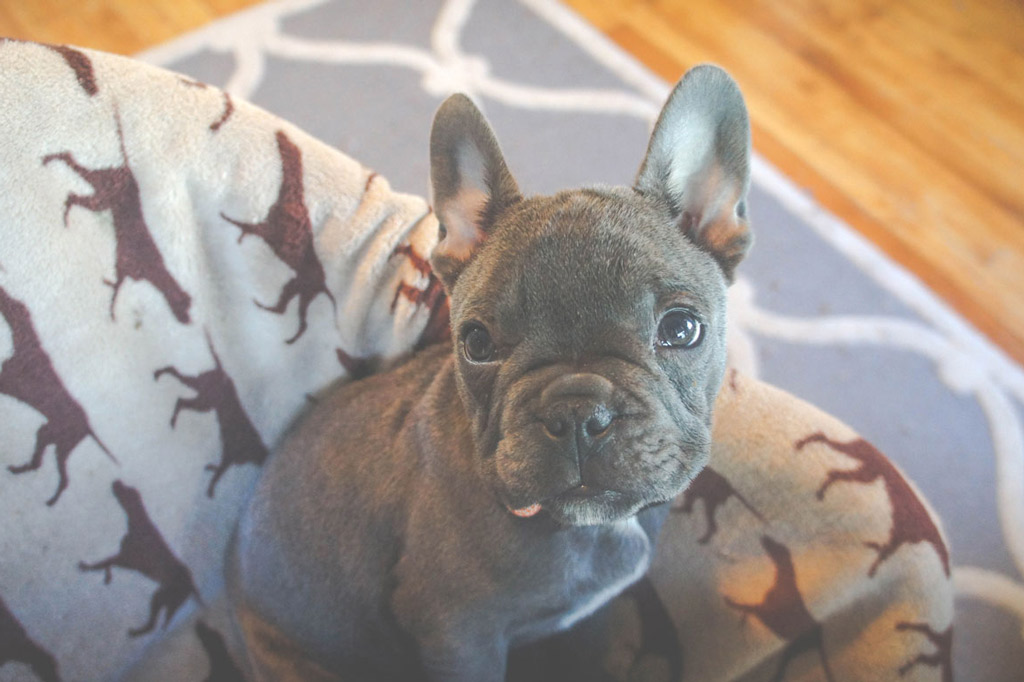
It can be a challenge to combine a desire for a ‘green’ environment with the need for household furnishings that are dog-proof and easy to keep clean.
However, bear in mind that your dogs live at ground level and are also likely to spend many more hours lying on furniture than the human members of the household.
How can you make your home dog-friendly and safe?
Continue reading to tick actions from our dog proofing your home, room by room, checklist.
How to Make Your Home Dog-Friendly
Creating a dog-friendly environment is one of the 5 pillars of dog care. And to do so, you can get started with your home, where your pooch is going to spend most of his time.
Here’s how to make your home dog-friendly and safe at the same time!
So, how can you make your home dog-friendly and safe?
Implement these tips for achieving a dog-friendly home:
#1 – Pick Durable Materials
Flooring
Pick durable floorings, such as tile, vinyl, or stone, that are easy to clean, stain-resistant, and toenail proof. If you still go for wooden floors, then choose harder woods like mahogany and oak. Also, if you can’t give up your love for carpet, then choose a colour that matches your pet, so loose hairs blend in.
Be sure to use anti-slip pads under area rugs to prevent accidental slips and slides.
Avoid hardwood floors that dent or scratch easily and require rapid cleaning when they get stained and carpets.
Opt for vinyl, stone or ceramic tiles. They are easy to clean and have the additional benefit of keeping your dog cooler during hotter weather.
Walls
In addition to flooring, choose wall treatments and furnishings with your dog in mind. Light colours will be more likely to show dirt. Low on the wall-stains should be easy to wipe clean with a damp cloth or sponge.
It also is easier to wipe smudges off a satin paint finish than off a flat finish. Remember that eggshell, satin, semi-gloss, and high-gloss are the easiest paint finishes to clean.
Avoid a highly-textured wall because it will attract dog fur, even if he isn’t rubbing against it, and flat finish paint.
Opt for eggshell, satin, semi-gloss, and high-gloss paint.
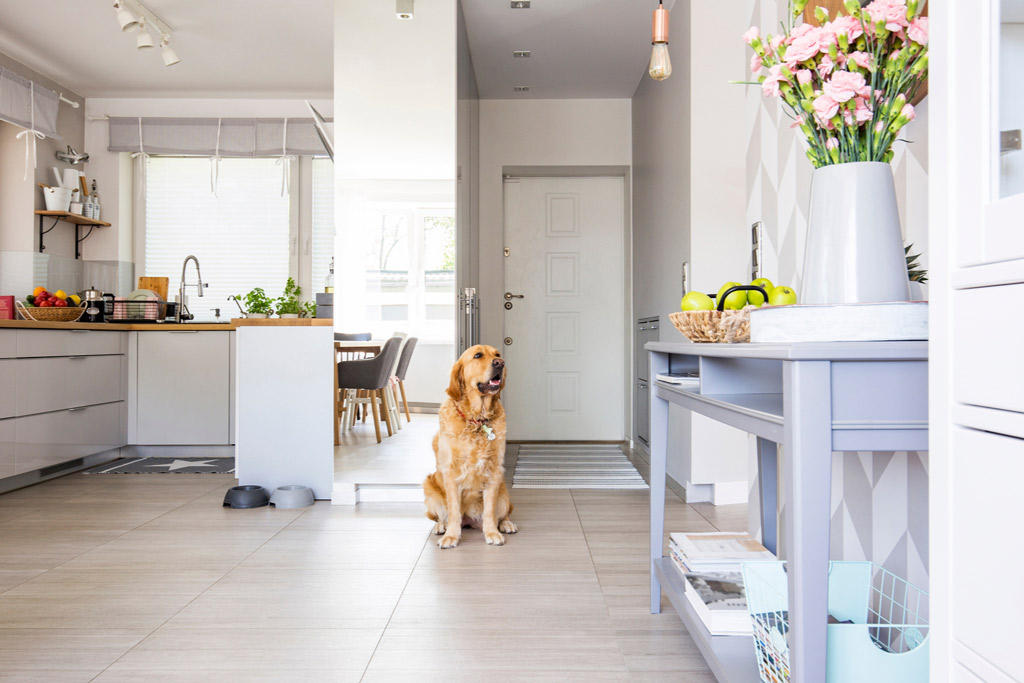
Hard Surfaces and Furniture
Small wood tables (coffee and end tables) might not be a good idea if you have a dog who scratches where he shouldn’t or a frequently drooling dog. Metal, stone, tile, and glass are better choices for coffee and accent tables if you’re concerned about dog slobber or claw damage.
Avoid furniture with wicker, rattan and sisal materials, especially if your dog can reach them.
Opt for metal, stone and chrome, i.e, hard materials.
Soft Furniture
If you are concerned about eliminating fur and pet odours from furniture, then Ultrasuede®, a machine-washable microfiber, might be your best bet for fabric that is family- and pet-friendly.
Many people feel leather sofas are the worst because sharp claws can cause scratches and punctures. However, if your dogs aren’t allowed on the furniture or simply aren’t interested in it, leather is great because you can easily spot any dog hair that lands on it and they can easily be wiped away.
If leather doesn’t work for you ethically or economically, another option is microfiber-covered sofas and chairs. Microfiber is a tight-woven synthetic material that is soil-resistant, easy to clean, difficult for pets to tear, and relatively inexpensive.
Avoid fabrics that are a magnet for dog’s hair like velvet, mohair, corduroy, velour or chenille.
Opt for leather and microfiber (Ultrasuede®) for sofas.
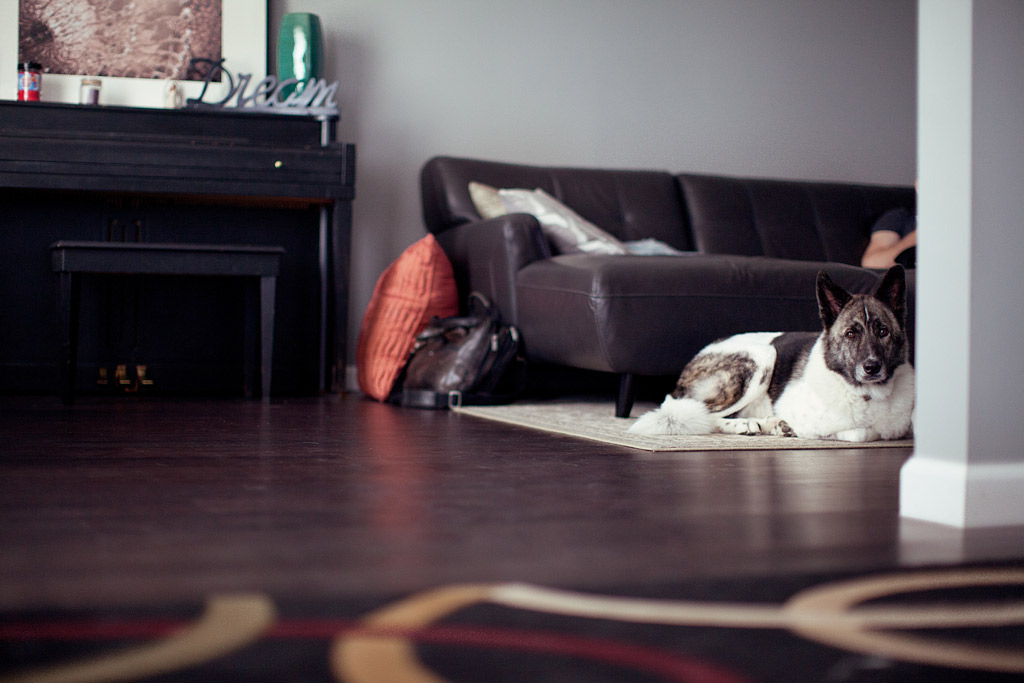
#2 – Dog-Proof Your Home
Dogs are not children, however, the same devices that keep kids safe also work on keeping dogs out of trouble.
- Baby gates that limit access to rooms or stairs.
- Covers for electrical outlets.
- Power-strip covers.
- Safety locks for your kitchen and bathroom cabinets.
- Some kind of system for your cables.
- Trash-can and toilet-bowl lid latches.
As a rule of thumb, keep away from your dog anything that can be dangerous or that you simply don’t want to get damaged. So put breakables out of reach: from shoes to glass vases.
In addition, you can limit your dog’s access to bedrooms and bathrooms by simply closing the door.
#3 – Have Windows with a View
Dogs love to peer out of the window to watch for their owners coming home and to enjoy some sunshine.
Curtains and drapes attract pet hair, dander, and odours. Laundering or dry cleaning window coverings can be a real chore. To avoid both wear and tear and cleaning, use wood blinds or vertical blinds.
Moreover, avoid curtains or blinds with long cords in which your dog could get tangled.
Avoid keeping your dog in the dark because of thick curtains or closed blinds.
Opt for curtains with a view like lightweight, sheer fabric curtains. Allow your dog to look out of a designated window, where there’s nothing harmful around.
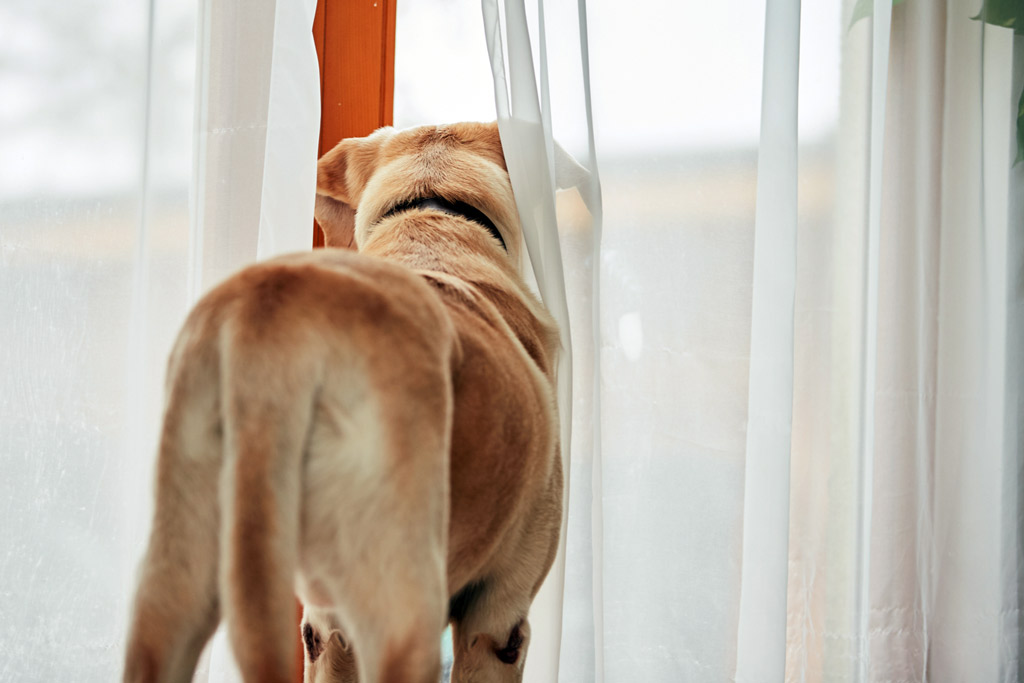
#4 – Poison-Proof Your Home
To begin with, a toxin-free environment is beneficial for every member of your household.
Did you know that common household items can be hazardous to dogs? That’s why it’s good to familiarize yourself with the top dog toxins — a list that includes:
- Plants.
- Human food.
- Medications.
- Household cleaning products.
- Garden products (pesticides and fertilizers).
- Garage products (glue and antifreeze).
- Other products that smell.
Poisonous Plants for Dogs
Double-check your plants to ensure they’re dog-friendly.
The top five most common culprits in dog poisonings include:
- Plants from the Araceae family, which include: philodendron, pothos, peace lily, calla lily, dumb cane, arrowhead vine, mother-in-law’s tongue, sweetheart vine, devil’s ivy, umbrella plant, and elephant ear.
- English shamrock, rhubarb (leaves) and tropical star fruit.
- Kalanchoe.
- Corn plant or dragon tree.
- Spring flowers, including certain spring bulbs such as daffodils, hyacinth, and tulips.
- Poinsettias, holly, ivy, mistletoe, and lilies.
Avoid these at all costs or keep them out of reach. However, you can add household plants that improve the air quality like a spider plant, aloe vera, and chrysanthemums. These are definitely beneficial for everyone.
Note: For a more detailed list, check ASPCA’s list of toxic plants for dogs.
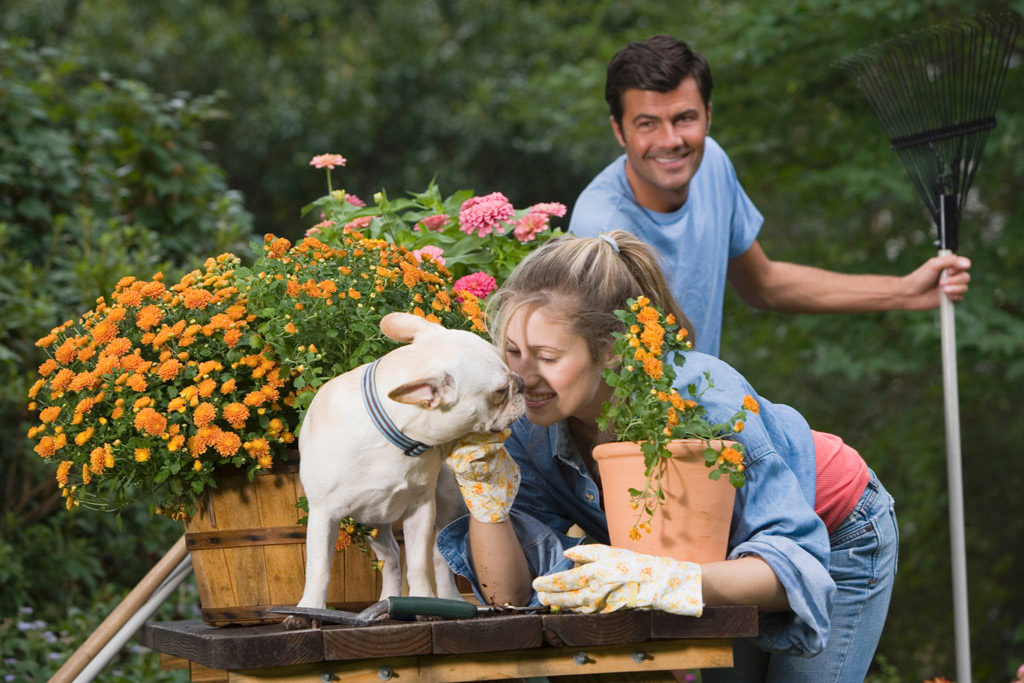
Human Food and Medication
Dogs can be opportunists when it comes to getting their paws on tasty treats. However, not all everyday foods and drinks are safe if they come into contact with them.
So, if what we eat on a daily basis can be toxic food for dogs, let’s have a look at some of the things that are particularly dangerous:
- Chocolate and chocolate-based products.
- Plants containing allium, including onions, garlic, leeks and chives. However, dogs can safely consume 1/4 teaspoon of freshly chopped garlic per 15 pounds of body weight since it has substantial health benefits.
- Macadamia nuts.
- Vitis vinifera fruits, including grapes, raisins, sultanas and currants.
- All sugars and artificial sweeteners, including xylitol.
- Alcohol, in particular, Ethanol in alcoholic beverages.
- Avocados.
- Medications and supplements.
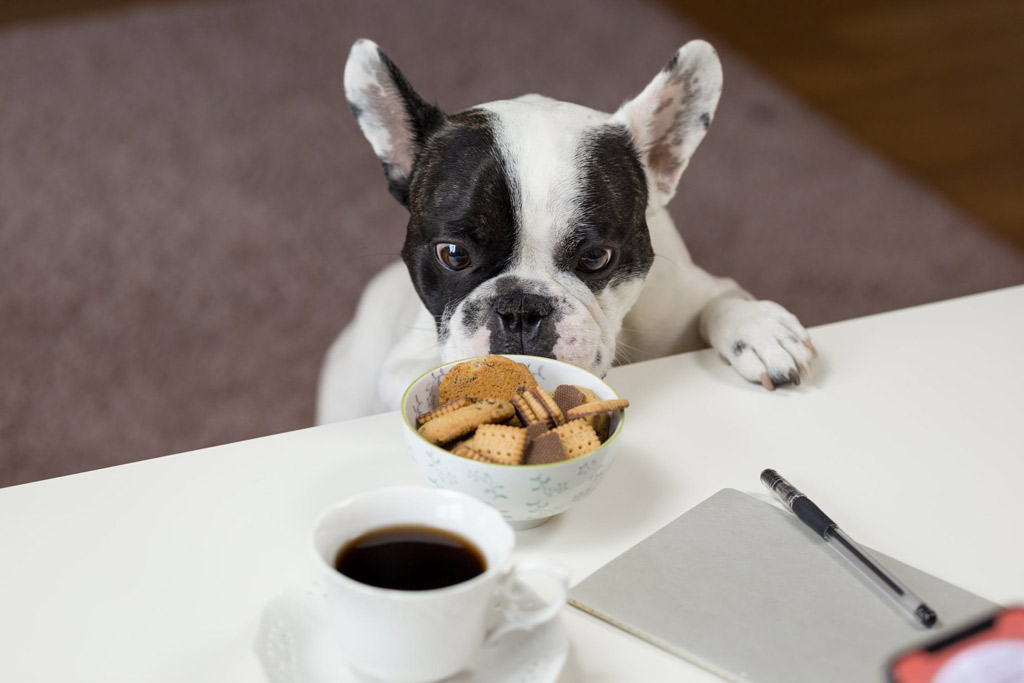
Toxic Cleaning Products
You can further reduce the environmental pollutants in your home by using non-toxic cleaning solutions for:
- Dish soap.
- Detergent.
- Floor cleaner.
- Etc.
However, to be safe, always keep locked away all cleaning products around the house.
Garden Products
Keep the following items out of reach and keep your dog away from the garden when using them:
- Pesticides.
- Fertilizers.
It’s best to keep your garbage can behind closed doors, or ensure the lid is always in place and secure. Trash and compost bins can contain many dog toxins such as coffee grounds, mouldy foods and bones.
Head over to How to Make Your Garden Dog-Friendly And Safe blog post to find out more!
Garage Products
You also need to dog-proof your garage and your garden shed. Even if your dog is not allowed there, it’s best to be safe in case your pooch finds his way in here!
Dangerous and poisonous items include:
- Glue.
- Antifreeze (lethal for pets).
- Fuel.
- Batteries.
- Paint.
- DIY tools, nails, crews, etc.
- Rat and mouse poisons.
Keep them out of reach and take extra care when cleaning up spills.
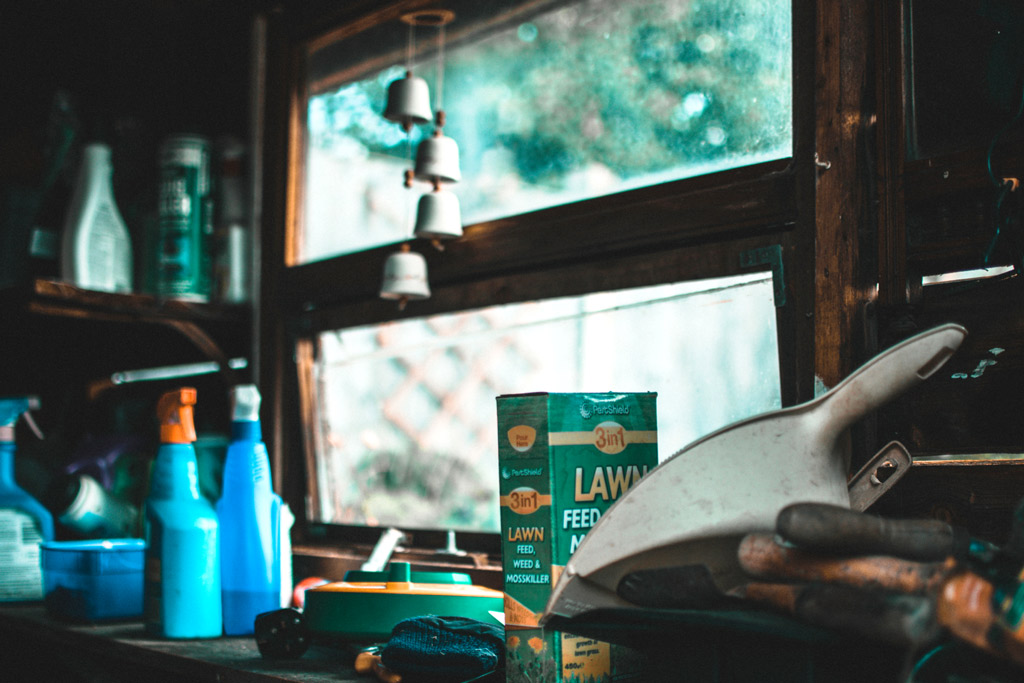
Other Products that Smell
Avoid using all scenting products, including:
- Air freshener sprays.
- Upholstery sprays.
- Plug-ins.
- Gels.
- Candles.
- Incense.
These products produce dangerous indoor pollutants that dramatically affect not only our dogs but also us.
In addition, if you smoke, keep all smoking-related products out of reach of your dogs, and preferably apart from the common areas. This includes:
- Cigarette butts.
- Ashtrays.
- Nicotine chewing gum.
- Nicotine patches.
- Electronic cigarettes.
#5 – Craft the Ultimate Dog Safe Zone
Providing your dog with a cosy and quiet place where they can retreat to is very important. So give her a place to call her own. Place a cosy crate or bed and some toys. Here’s where crate training comes in handy.
This is an area where your dog can retreat to rest or have a nap, or not get disturbed when the household gets busy.
Avoid leaving the food bowl out in plain sight.
Opt for keeping a water bowl around a corner so your furry friend always has fresh water available.
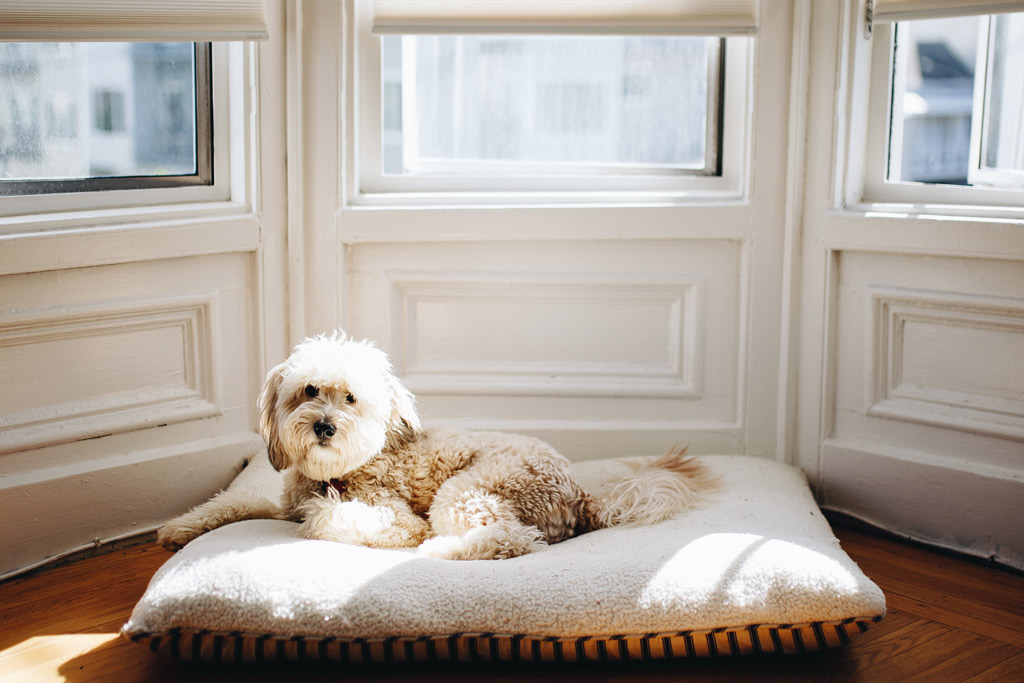
#6 – Create a Mudroom Sanctuary
Instead of walking straight to the interior of the house when your doggy gets home full of mud, or simply wet, create an area where you can dry him off and wash down before he can enter the home.
For those of you who have an entryway door or vestibule, convert the space between both doors into a room for your dog. Otherwise, just establishing a dog-friendly animal area at a hall entry or in a mudroom can prevent dirt from being tracked throughout your home.
As well, you can store his gear, towels, healthy treats and other essentials in a cupboard at this entrance to keep the area tidy. You can use a storage shelf or basket to keep towels within arm’s reach when you need to dry fur. Then, add an attractive hook to give you a handy place to hang a lead.
If you’re planning to install a dog door, the hall entry is a great place to put it to restrict your dog from the rest of the house, while still providing free access to the outdoors.
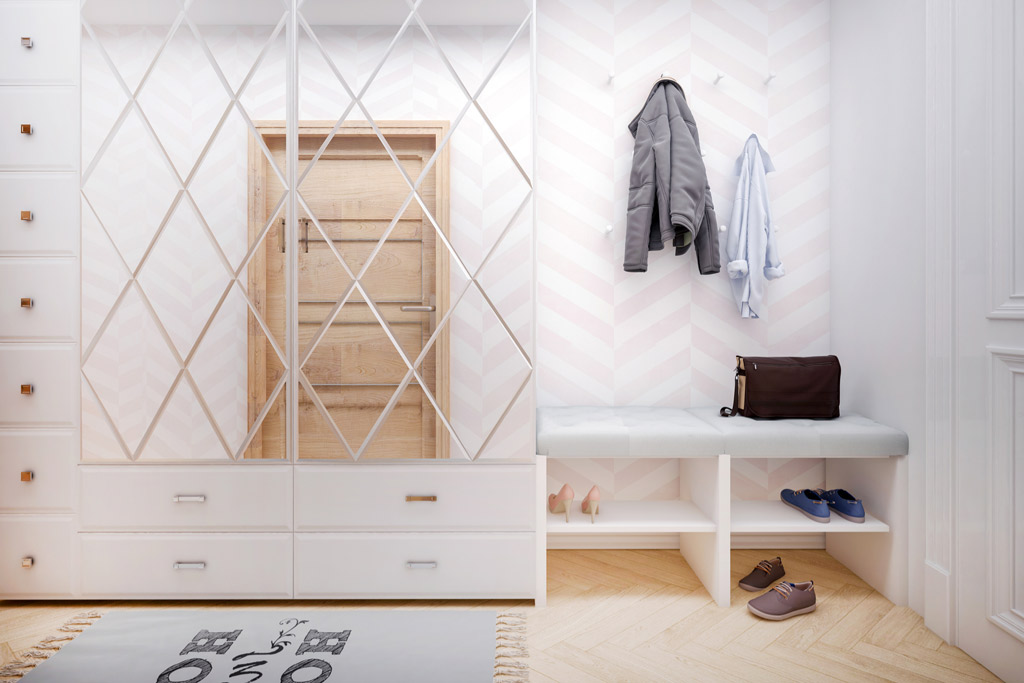
Dog-Proofing Room by Room (Checklist)
Here’s a room by room checklist to dog-proof your home!
Kitchen and Bathrooms
- Use childproof latches to keep cabinets closed.
- Place medications, laundry and cleaning products out of reach.
- Keep trash cans closed or inside a latched cabinet.
- Keep foods out of reach.
- Keep the toilet lid closed to prevent drowning or drinking of harmful cleaning chemicals.
Living Room
- Place dangling wires from lamps, VCRs, televisions, stereos, and telephones out of reach.
- Put away children’s toys and games.
- Place poisonous house plants out of reach; beware of hanging plants that can be jumped onto from nearby surfaces.
- Make sure all heating and air vents have covers.
- Put away anything that could be dangerous or breakable.
Bedrooms
- Keep clothes and shoes behind closed doors.
- Place lotions and cosmetics off accessible surfaces like the nightstand.
- Move electrical and phone wires out of reach of chewing.
Hallway
- Avoid open stairways, decks or balconies, which can result in falls. You can put gates on the stairs.
- Keep doors closed, especially if they can allow your dog to escape outside.
Garage and Garden
- Move all chemicals to high shelves or behind securely closed doors.
- Clean all antifreeze from the floor and driveway.
- Keep all sharp objects and tools out of reach.
- Make sure that plants in your garden are safe for dogs.
- Check the fence for any holes or spaces where your dog might be able to squeeze through and patch them up.
- Keep your swimming pool fenced or covered.
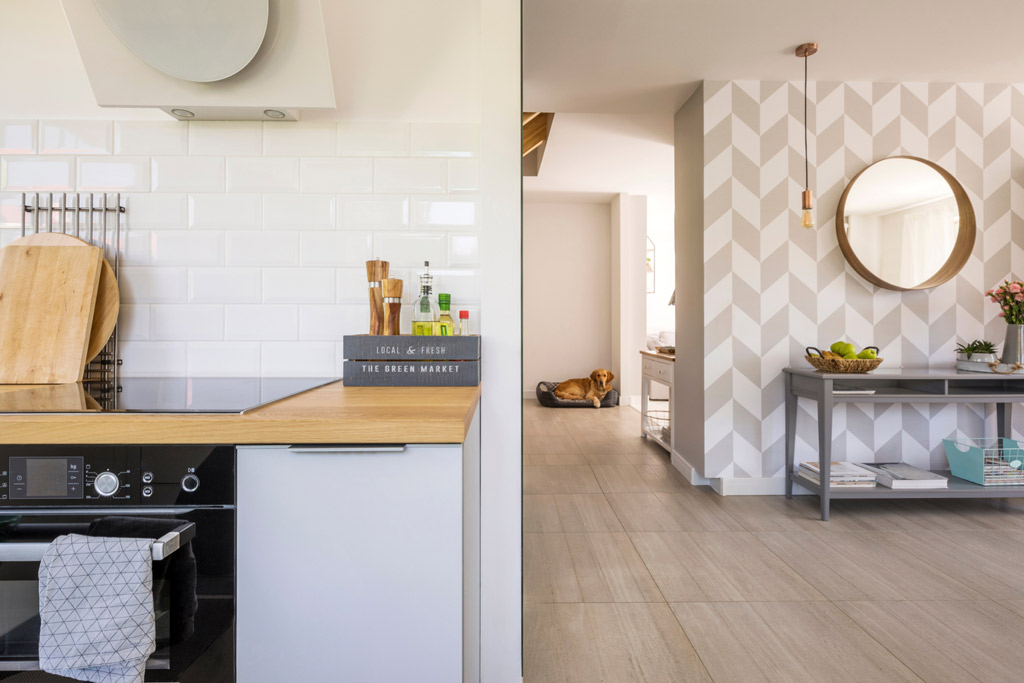
Dog-Safe and Eco-Friendly Home
How can my house be dog-safe and eco-friendly?
Recycling has a huge impact not only in your household but on the whole world! You can recycle dog food cans, cardboard wrapping, and plastic packaging.
Also, why not contribute by purchasing your dog supplies from eco-friendly companies. You can look for products that are made from sustainable materials like hemp and bamboo, and those that are minimally packaged (little plastic use) or packaged using environmentally friendly materials (cardboard rather than plastic, for example).
Plus, you can use eco-friendly poop bags, which are biodegradable and are meant for composting. Cleaning up after your doggy is a necessary chore, but it doesn’t have to be so bad for the environment.
Finally, instead of tossing out gently used collars, leashes, beds, clothing, bowls or toys you can donate them to a local animal shelter or rescue organization.
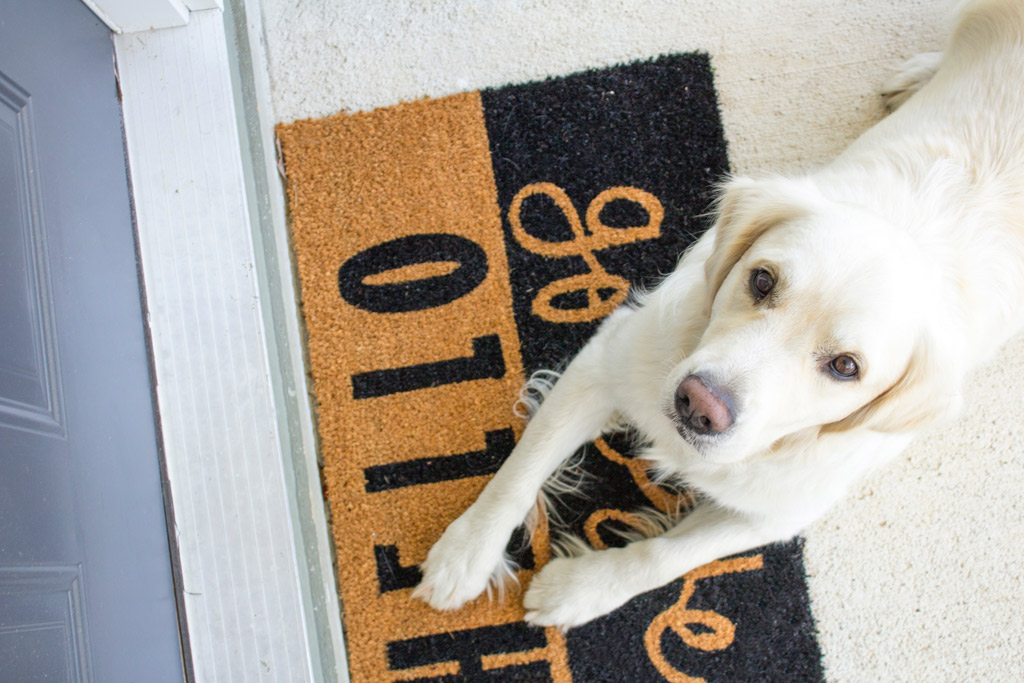
Final Thoughts
Having a clean home that happens to house several pets isn’t mission impossible.
Preventing as much mess and destruction as you can, get everyone in the household involved, and don’t get overwhelmed when mess cannot be prevented or avoided. It’s not cleaning that keeps a home always warm, and welcoming, it’s love!
Welcome to a dog-friendly home! 😉

